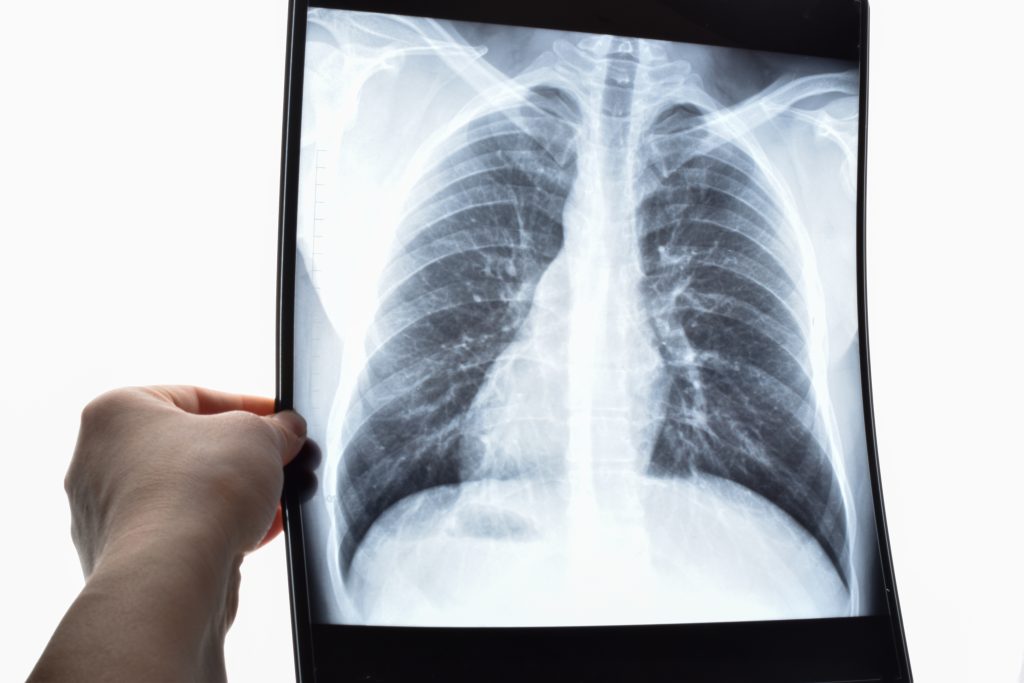What Is a Lobectomy?
A lobectomy is a type of surgery that involves the removal of one whole lobe from the lung. This procedure is done for various reasons, such as if a person has been diagnosed with lung cancer, infection, COPD, or benign tumors. The right lung has three lobes, while the left lung has two. Depending on the specific diagnosis, the procedure can be performed using a few small incisions (minimally invasive) or one longer incision (thoracotomy) on the side of the chest. In addition to removing the affected lobe, nearby lymph nodes are also taken out to prevent the potential spread of disease or cancer.

When is a lobectomy performed?
In its early stages, non-small cell lung cancer is commonly treated with a lobectomy, which involves removing a lobe of the lung. Surgeons may also opt for removing smaller portions of the lung, depending on factors such as tumor size, location, and lymph node status.
A lobectomy is not only performed for lung cancer; it may also be necessary in other cases such as:
- Lung abnormalities present at birth.
- Injuries to your lung caused by infection or exposure to radiation.
- Tumors in your lungs that have originated from other locations in your body.
- Bleeding from lung damage.
Purpose of a Lobectomy

A lobectomy is a surgical procedure in which a section of the lung is removed because it is unhealthy or injured, usually caused by lung cancer. It is typically done for non-small cell lung cancers that are contained within one lobe of the lung. It should not be confused with a sleeve lobectomy, which involves removing a lobe of the lung as well as a portion of the airway.
The aforementioned method is less intrusive and preserves a greater amount of lung capability compared to a pneumonectomy, which is a surgical procedure that involves removing the entire lung. In contrast, it is slightly more extensive than a wedge resection, where the tumor and a small portion of nearby tissue are removed.
What Happens in a Lobectomy?
There are several approaches that doctors can take when performing surgery. The choice of method will depend on the specific nature and location of the lung issue, as well as the patient’s overall health. The available options comprise:
- In a procedure known as thoracotomy, the surgeon creates a lengthy incision on the side of your chest. By separating your ribs, they gain clear visibility to effectively extract the impacted section of your lung.
- Video-assisted thoracic surgery (VATS) is a procedure where the surgeon makes small incisions in the side of the chest, typically two to four cuts. One incision is around 2 ½ inches long, while the others are approximately half an inch long. A small tube equipped with a video camera is inserted to provide a view inside the chest and assist the surgeon in navigating their instruments. Unlike traditional open surgery, VATS minimizes the size of the incision, leading to faster healing and reduced discomfort.
- Robotic surgery involves a surgeon operating through a console located near the patient, using robotic arms. This technique requires making small incisions between the ribs, typically three to four half-inch cuts, which can result in reduced bleeding, a decreased risk of infection, and a quicker healing process.
What happens after a lobectomy?

Following your lobectomy surgery, the medical personnel will halt the medication that is keeping you unconscious. Once you regain consciousness, they will remove the tube assisting your breathing in the operating room. Subsequently, you will be transferred to a recovery area where your family can visit you. In addition, you will be provided with a pain medicine pump that allows you to administer pain relief within the guidelines set by your healthcare providers.
After fully recovering, most individuals are typically transferred to a standard hospital room. However, in certain cases, individuals may be admitted to an intensive care unit following a surgical procedure.
You will have one or two chest drains to eliminate excess fluid and air surrounding your lung, which will be removed by a medical professional based on their level of output.
Your healthcare team will motivate you to cough frequently, which necessitates effective pain management. Throughout your hospitalization, your healthcare providers will monitor your heart rate for any irregularities. Additionally, injections will be administered in your stomach to prevent blood clots in your legs while you are lying in bed. The day following your surgery, your healthcare providers will encourage you to walk with assistance.
Recovery
After your lobectomy, you may receive ongoing observation in an outpatient facility. In certain cases, patients might need to be monitored in the intensive care unit (ICU) for a short period before being transferred to a standard hospital room.
A respiratory therapist will assist you by instructing you to take deep breaths and use an incentive spirometer to breathe. The nursing team will support you in getting up and moving around as soon as you are capable.
Assuming there are no complications, the typical hospital stay for the majority of individuals ranges from four to seven days, varying based on the specific kind of lobectomy performed.
Treatment in Türkiye:
The medical staff of surgical teams, doctors, and consultants at REHABTÜRK can provide the best treatment options and free consultations, striving to stay up-to-date on the latest medical technologies and methods.
